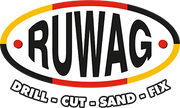5 Reasons Your Drill is Overheating
Wondering why your drill overheating? If you’re starting to see or smell smoke or feel your tool getting way too hot, it’s a huge sign that something is going wrong. If your tool ever overheats, you will need to stop using it immediately. Continuing to use a drill that is already heating up can lead to permanent damage to your tool. It can also pose a major safety hazard. To give you an idea of why your drill is overheating, we’ve put together a few of the most common reasons that drills may get too hot.
Why is My Drill Overheating?
Here are just some of the reasons that your drill is overheating.
Drill speed
The most common cause for overheating a drill bit is incorrect drill RPM. This is determined by the drill diameter and material being drilled. As a rule of thumb, the larger the diameter of the bit and the harder the material being drilled, the lower the drill RPM should be.
Broken bits
Broken bits can damage your workpiece and your drill. They are more likely to get stuck in your workpiece - especially if you are drilling softer materials. Trying to remove them can result in overheated drills. To minimise this risk, keep your bits sharp, replace any worn bits, use quality bits instead of cheap bits that are more likely to break, and always use the right bit for the material you are drilling.
Wrong angle
Drilling at the wrong angle can cause overheating, too. If you are not using the right angle, the point will rotate in the same place instead of in the hole you are trying to drill. Drilling at the wrong angle can also increase the risk of drill bits getting stuck, which is another cause of overheating. To make sure you drill at the correct angle, always clamp your workpiece and keep the drill at the degree required for the specific type of hole you are drilling.
Excessive force
Using too much force is never good, for bits, material and especially power tools. Drill bits are not made to force holes into wood, brick or other materials. You need to use the recommended force and work with the drill to let it do the work without pushing too hard. Always follow guidelines on required force and when in doubt, use minimal force.
No maintenance
Poorly maintained tools cause damage in many ways - not only overheating. You will need to ensure that there is no dust, wood or metal chips or any other debris left after using your drill. Cleaning your drill after use is essential. Failing to keep your tool in proper condition can result in injury and other problems, including drills jamming or breaking completely beyond repair.
Continuous drilling
Drilling continuously without any breaks is a surefire way to heat up your drill. Whatever material you are drilling, you will need to take breaks to give your tool time to cool. Using coolants or lubricants is also essential when you work. Even though it may seem like this will take up you could spend finishing your project, this step can save you a lot of time and money in the future if it means preventing a damaged drill.
Make sure that you invest in high-quality drill bits from Ruwag and follow these tips to make sure that you don’t have to worry about your drill overheating.

